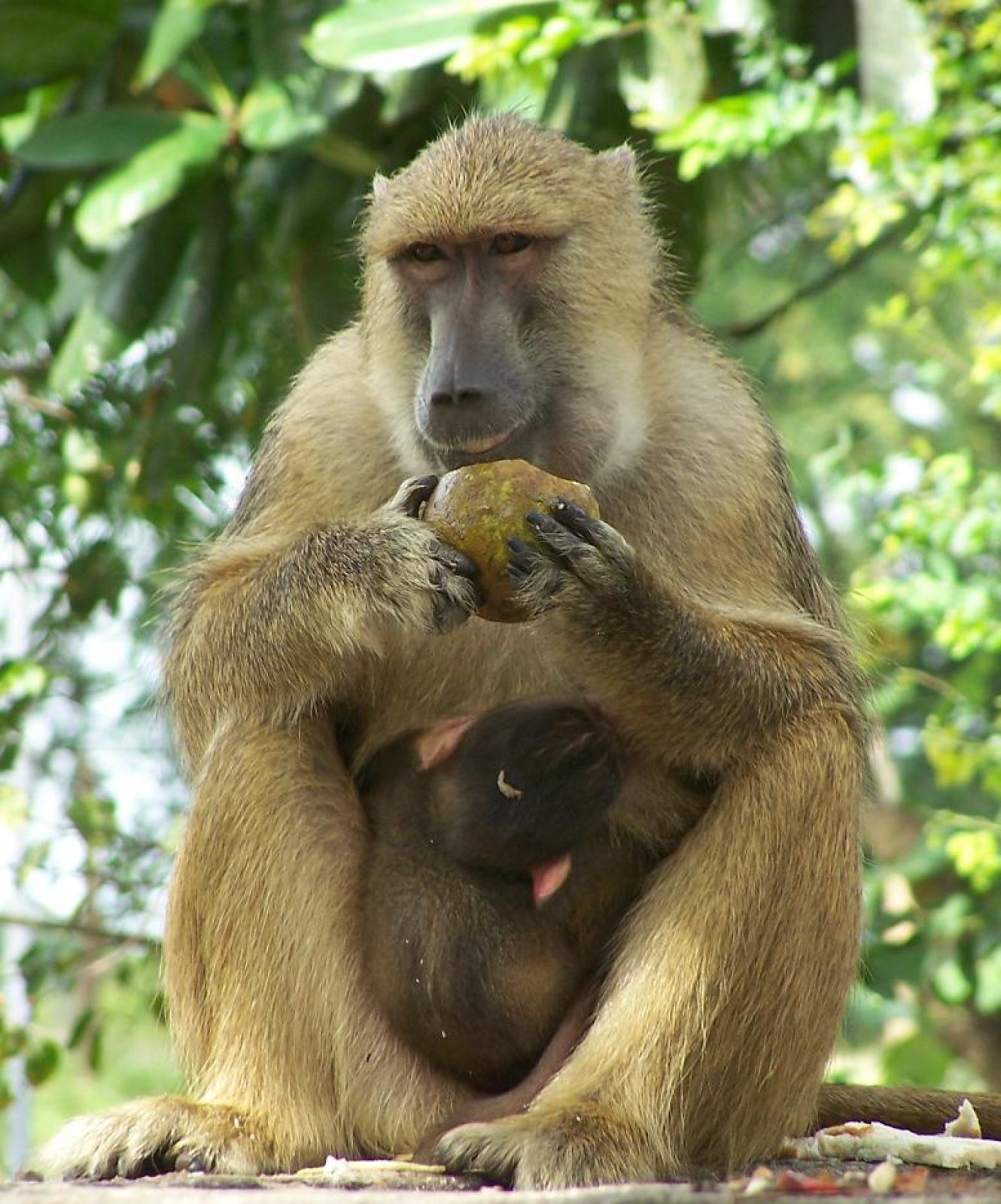
Yellow Baboon
The yellow baboon is from the Old World monkeys, living in savannas and light forests in eastern Africa, from Kenya and Tanzania to Zimbabwe and Botswana. . The species name means “dog-head” in Greek, due to the dog-like shape of the muzzle and head. Yellow baboons have slim bodies with long arms and legs along with yellowish-brown hair, they look similar to Chacma baboons, but are smaller. They hairless faces are black but framed with white sideburns. Males can grow to about 84 cm, females to about 60 cm with tails almsot as long. The average life span of the yellow baboon in the wild is roughly 15–20 years; some may live up to 30 years.
They are active during the day, defend an area, and live in complex, mixed-gender social groups of 8 to 200 individuals per troop. Like all baboon species, they are omnivorous, with a preference for fruits. However, they are opportunistic and so will take plants, leaves, seeds, grasses, bulbs, bark, blossoms and fungi, as well as worms, grubs, insects, spiders, scorpions, birds, rodents and small mammals when the opportunity presents, or when there is not enough fruit to sustain them.
Baboons are effective predators of small mammals, as well as ready prey for larger predators, They are also important for the ecosystems, as many of the seeds are transported by them after being eaten.
Baboons have been able to take advantage of a variety of habitats, including living alongside humans. This makes them one of the most successful African primates and are not listed as threatened or endangered. Having said this, they are often regularly exterminated in particular areas. At the current time, give their large number this is no threat to their ongoing survival. Unfortunately, this may change in the future and so it should be watched carefully.
The two subspecies of the yellow baboon are:
- Papio cynocephalus cynocephalus (typical yellow baboon)
- Papio cynocephalus ibeanus (Ibean baboon)
Yellow baboons use at least ten different sounds to communicate. When traveling as a group, males will lead, females and young stay safely in the middle, and less-dominant males bring up the rear. A baboon group’s hierarchy is a serious matter, and some subspecies have developed behaviors intended to avoid confrontation and retaliation. For example, males may use infants as a kind of “passport” or shield for safe approach toward another male. One male will pick up the infant and hold it up as it nears the other male. This action often calms the other male and allows the first male to approach safely.
They are readily viewed where they are found, and are interesting animals to watch. Care must be taken with rubbish, as they can quickly become dependent on human waste, and this makes them dangerously agressive.
Below, you will find a list of all places they have been mentioned on this website, and below this, we hope to list many places where you can travel to see them in the wild.
